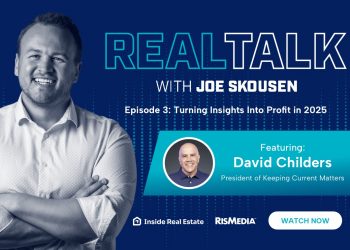Coming into 2022, experts predicted we could see interest rates reach upwards of 4%. That number was already eclipsed and now rates are quickly on the rise towards 5%, according to the latest Freddie Mac Primary Mortgage Survey (PMMS), released this week.
Key findings:
- 30-year-fixed-rate mortgages averaged 4.72% with an average 0.8 point for the week ending April 7, 2022. This is up from last week’s 4.67% average. Last year during this same period the rate was 3.13%.
- 15-year-fixed rate mortgages averaged 3.91% with an average .08, up from last week’s 3.83%. This rate was 2.42% during the same period last year.
- The five-year treasury index hybrid adjustable-rate mortgage (ARM) averaged 3.56% with an average 0.3 point, up from last week’s 3.50%. Last year’s rate during this time period was 2.92%.
The takeaway:
“Mortgage rates have increased 1.5 percentage points over the last three months alone, the fastest three-month rise since May of 1994,” said Sam Khater, Freddie Mac’s chief economist. “The increase in mortgage rates has softened purchase activity such that the monthly payment for those looking to buy a home has risen by at least 20% from a year ago.”
“The Freddie Mac fixed rate for a 30-year loan increased for the fifth consecutive week, with a 5-basis-point jump to 4.72%, following the surge in the 10-year Treasury, which crossed the 2.6% threshold this week, the highest level in four years,” said George Ratiu, manager of economic research at realtor.com®. “Investors are digesting this week’s remarks by a number of Federal Reserve presidents which echo Chairman Powell’s stated concerns that inflation is on an aggressive path which threatens to derail the economy by cutting consumer spending. The Fed is using forward guidance to inform markets that the bank will take a much harder turn in its monetary tightening to stem what it implicitly acknowledges is a case of runaway inflation. After spending the better part of 2021 downplaying inflation concerns as “transitory,” the Fed finds itself behind the eight ball, needing to unwind an unprecedented quantitative easing platform. For lenders and mortgage originators, the labor shortage driving strong employment gains combined with rising prices, is adding upward pressure on costs leading to higher rates. The bottom line is that mortgage rates are on course to surpass 5%, a level not seen since February 2011, when the typical home in the U.S. was priced at just $166,000—less than half the price of today’s typical home.
For real estate markets, the sharp jump in mortgage rates over the past quarter indicates a decisive turning point. We entered 2022 on strong footing, with rising job numbers and wage growth driving demand for homes. The shortage of inventory pushed prices to record highs even before the spring season got underway. At current rates, buyers of a median-priced home are looking at monthly mortgage payments which are $460 higher than a year ago, a 38% increase from April 2021. The increase in the cost of financing a home is outgunning the 8% yearly rate of inflation, the 15% rise in home prices, and the 17% advance in rents. For many American families, today’s mortgage rates are closing the door on being able to afford to buy a home this spring. We are approaching the tipping point at which market demand is expected to pull back. The silver lining to the current affordability crisis is highlighted in realtor.com®’s new seller report, which shows that many homeowners are planning to list their properties for sale in the next few months. The supply boost would be welcome news for this year’s housing markets.”












